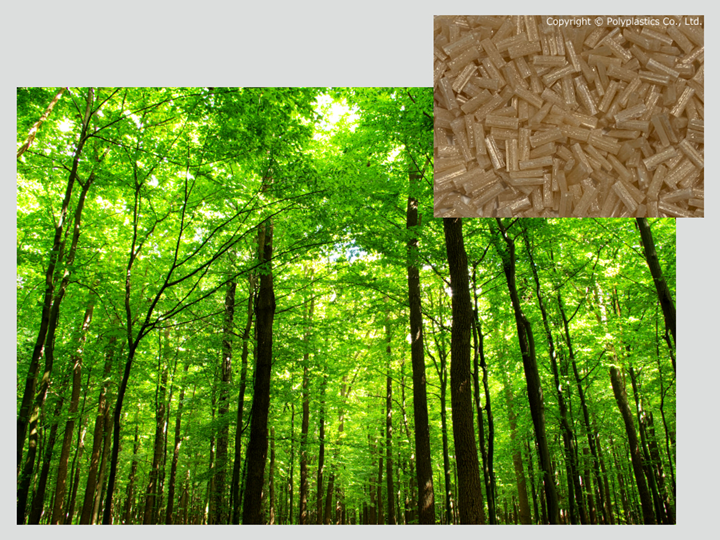LFT-PP Made of Regenerated Cellulose
Polyplastics’ new eco-friendly Plastron LFT boasts weight reduction and mechanical strength.
A long-fiber-reinforced-thermoplastic (LFT) made with specially formulated regenerated cellulose fibers is newly available from Polyplastics Group. Eco-friendly Plastron LFT-PP reportedly provides weight reduction plus mechanical strength, enabling manufacturers to reduce their carbon footprint and meet today’s sustainability demands.

Cellulose is a promising material to help reduce CO2 emissions but its insufficient strength is a limiting factor. Regenerated cellulose is natural cellulose spun into continuous fibers through wet spinning. Since cellulose is highly insoluble in solvents, a large portion of regenerated cellulose fibers are manufactured through long and cumbersome processes. Polyplastics tackled this challenge by developing regenerated long-fiber cellulose materials via a solvent method--a simple manufacturing process that emits very little CO2. Since this method involves a closed process that recovers virtually 100% of the solvent, it generates hardly any waste and produces materials that are even more eco-friendly. The company has earned multiple patents for this technology in Japan and internationally.
A comparison of long-fiber cellulose-reinforced PP resin versus long-fiber glass-reinforced PP resin at the same flexural modulus shows that cellulose-reinforced resin has lower density than glass-filled resin. While long-fiber cellulose-reinforced PP resin has a flexural modulus roughly 3% higher than that of 30% long-glass reinforced PP resin, it exhibits higher values for Charpy impact strength, tensile strength, and flexural strength, thus indicating potential for upgraded strength.
Related Content
-
Lanxess and DSM Engineering Materials Venture Launched as ‘Envalior’
This new global engineering materials contender combines Lanxess’ high-performance materials business with DSM’s engineering materials business.
-
Polymer Science for Those Who Work With Plastic — Part 1: The Repeat Unit
What are the basic building blocks of plastics and how do they affect the processing of that material and its potential applications in the real world? Meet the repeat unit.
-
Prices Up for All Volume Resins
First quarter was ending up with upward pricing, primarily due to higher feedstock costs and not supply/demand fundamentals.











